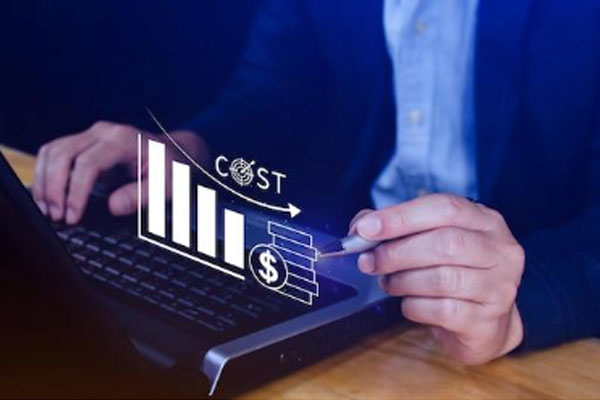ERP pricing in 2025 is more critical than ever for businesses looking to invest wisely in digital transformation. Nearly 47% of ERP implementations exceed budget expectations due to hidden costs and unclear pricing structures.
From license fees and implementation charges to maintenance and cloud subscriptions, understanding the full cost breakdown is essential. In this blog, we unpack the key components of ERP pricing, explore the latest pricing models, and offer insights to help you plan your ERP investment more accurately in 2025.

7 factors influencing ERP pricing structure
Here are 7 factors that can influence the ERP pricing structure for any enterprise:
1. One-time licensing or subscription
Enterprises can opt for either the licensing model or a cloud-based subscription model. In the licensing model, enterprises pay a one-time fee to purchase and use the ERP solution. The subscription model is more cost-effective but requires enterprises to pay a recurring payment to renew the subscription after expiry.
2. Number of ERP users
ERP pricing is also influenced by the number of users who need to access the ERP system to perform their daily work. This cost factor is also determined by the number of users (with administrator privileges) against regular users (with basic privileges).
3. Scope of ERP implementation
Depending on the complexity of their existing system, enterprises can incur additional implementation costs when shifting to the new ERP system. For example, do they need to convert and migrate data to the new ERP system? Additionally, enterprises may need to customize the ERP solution to meet their business requirements.
4. Third-party integration
Apart from ERP customization, enterprises also look to integrate their ERP system with third-party solutions like CRM and Business Intelligence (BI). Without third-party integration, there’s limited data flow and sharing between applications, impacting their decision-making abilities.
Data-driven enterprises also need efficient data integration between diverse systems and applications. Depending on the complexity of this integration, enterprises can incur high costs.
5. Number of ERP modules
ERP pricing is also impacted by the number of ERP modules the company needs. With more supported modules, enterprises incur higher purchasing and implementation costs in the long run. Additionally, depending on the ERP tool, they may need to pay more for any industry-specific module (for example, customer relationship management or CRM).
6. Customer support and training costs
Besides the upfront and implementation-related costs, ERP pricing is also determined by the level of customer support and training the chosen ERP vendor delivers. While some vendors may charge a fixed fee for after-sales customer support and training, others may charge depending on the number of users and the complexity of their operations.
7. ERP maintenance costs
An ERP solution is a long-term investment for any small or large enterprise. Enterprises incur maintenance costs through regular upgrades, bug fixes, and technical support to keep it functional. This can add to their long-term costs.
Alternatively, larger enterprises may hire and build an in-house ERP support team for regular updates and maintenance. In this case, they must consider cost factors such as workforce hiring and training requirements.
Next, let’s discuss some popular ERP pricing models and how they impact costs.
6 types of ERP Pricing models
Here are 6 types of ERP pricing models along with their pros and cons:
1. Licensing model
In this model, enterprises make a single-time upfront payment to purchase their ERP tool.
Pros: One-time payment that can reduce the long-term implementation cost.
Cons: The upfront implementation cost can be high, thus making it unaffordable for smaller budget-conscious companies.
2. Subscription model
The cloud-based subscription model involves recurring payments at the end of each month or year.
Pros: Lower upfront cost makes the ERP solution affordable for enterprises of all sizes.
Cons: Depending on the cloud ERP vendor, enterprises may incur high implementation costs or escalations in the long run.
3. Usage-based model
The usage-based model offers a variety of pricing tiers, which are priced according to the ERP features and services required by the enterprise.
Pros: The usage model is priced by the actual usage, making it useful for enterprises with varying usage patterns.
Cons: Enterprises cannot stick to their allocated ERP budget due to varying usage, thus resulting in long-term cost escalation.
4. Tier-based model
This is a popular ERP pricing model where enterprises can choose the right plan based on current and future business requirements.
Pros: Allows enterprises to leverage ERP features for their benefit at an affordable cost.
Cons: Provides limited scalability for fast-growing companies who need to pay more to move to a higher tier.
5. Module-based pricing model
This pricing model is cost-effective as enterprises only pay for the required ERP modules.
Pros: Cost-effective as enterprises can exclude non-essential modules from their purchased package.
Cons: Adding more ERP modules whenever the enterprise requires can be expensive.
6. Hybrid model
The hybrid model is a combination of the on-premise licensing and subscription models.
Pros: Allows enterprises the flexibility to leverage the benefits of both these pricing models.
Cons: It can be expensive for smaller companies to install and run both on-premises and cloud ERP systems.
Conclusion
To summarize, enterprises adopting ERP solutions must evaluate and understand ERP pricing before choosing the right solution. Besides that, an experienced ERP implementation company like Praxis Info Solutions can guide enterprises in choosing the best ERP solutions company for their business requirements.
With years of expertise in the ERP domain, Praxis provides complete transparency in its ERP pricing strategy without any hidden costs. If you’re interested in knowing more, contact us today.
Business Intelligence & Analytics..
Perfect enabler for insightful decision making. Call us on +91-88050 25521/18/19

